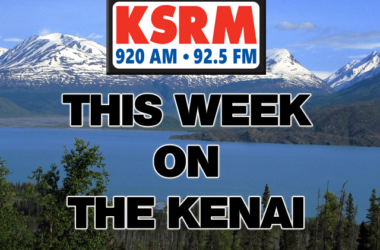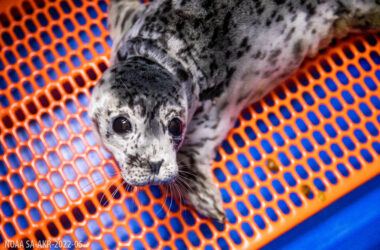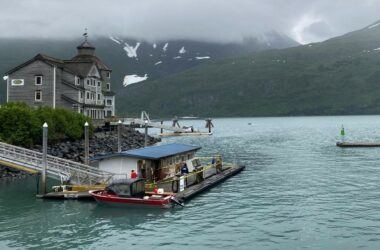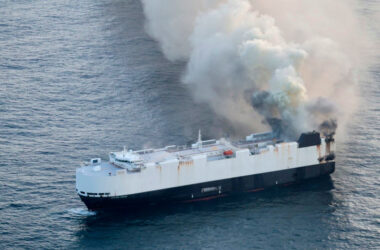In 2019 the Kenai Peninsula Food Bank recorded one of its largest food distribution years to date, giving out more than 900,000 pounds of food to low-income residents of the Kenai, an amount that seemed staggering at the time. The amount of food distributed in 2020? 2.2 million pounds.
Greg Meyer, the KP Food Bank’s Executive Director, almost sounds incredulous when he talks about the increase. “People call it ‘the perfect storm’; I call it the imperfect storm,” he says. “Coming out of the pandemic, we go into [these] food shortages, supply chain issues, inflation, food costs, fuel costs. And then TEFAP [The Emergency Food Assistance Program], which are the government commodities that we get, by the end of this year, will have dropped by 74%. So, all of these resources, and then having the SNAP [Supplemental Nutrition Assistance Program] backlog. You know, we had more requests and we were getting less food.”
When asked how the now infamous Alaska SNAP backlog impacted his food bank, Meyer pauses before finally answering. “We literally had people that were melting down in tears because they weren’t getting support and had such a hard time, you know, getting other things pulled together.”
The current overwhelming shortage of food for those in need is just one more way the pandemic’s specter continues to haunt economies around the world, a phantom which will likely take more time to exorcise than anyone really understands.
In response to these supply shortages, Meyer, along with a delegation from the Food Bank of Alaska headed for Juneau in February of this year seeking aid to replenish their stores. Fortunately, the state’s response was more immediate than he could have imagined. “We talked about what are the things that could be done, and one of the things we said is you know, really immediate financial support so we can start buying food because we had depleted a lot of our resources. And, when we were in the airport the next day, leaving to fly back to Anchorage, they actually responded, and had already appropriated that $1.7 million.”
A life-raft in the imperfect storm.
Then on Wednesday, the Department of Health officially announced the successful completion of the measure aimed at alleviating the strain on Alaska’s food banks.
The funds were an instrumental first step to bolster depleted food banks across the state, allowing them to restock dwindling supplies; the repurposed funds also assisted with distribution, enhanced logistics, and strengthened outreach to remote communities.
“We are proud to announce the positive outcomes of this effort, which provided crucial support to help feed Alaskans,” Governor Mike Dunleavy said in a press release. “This successful undertaking demonstrates our commitment to the well-being of all Alaskans.”
“Redistributing these funds replenished Alaska’s food pantries and food banks throughout Alaska,” said Department of Health Commissioner, Heidi Hedberg. “As a result, while we worked to eliminate the backlog and improve the program as a whole, our most vulnerable citizens regained access to nutritious meals.”
“The impact of this effort cannot be understated,” said Food Bank of Alaska CEO Jim Baldwin. The organization distributed 567,765 pounds of food to 82 partners statewide, from Ketchikan to Bethel and Gambell. “We were able to begin responding to the urgent needs of our communities by distributing more food to those impacted. We are extremely grateful for the Governor’s swift response to address food insecurity in our state.”
The Fairbanks Community Food Bank, Kenai Peninsula Food Bank (based in Soldotna) and Southeast Alaska Food Bank (based in Juneau) also distributed allocations to regional partners.
“This program was a huge blessing to many folks across the Kenai Peninsula,” said Meyer in his contribution to the press release. “We were able to distribute food through pantries in Kenai, Soldotna, Homer, and villages across Kachemak Bay, Anchor Point, Nikiski, Tyonek, Hope, Cooper Landing, Moose Pass and Sterling. We had many people so excited and grateful for extra food support at a time of food shortages.”
The aid couldn’t have come at a better time, allowing Food Banks across Alaska to resupply their dwindling reserves, and yet it’s still just a life raft. And the imperfect storm hasn’t passed.
Meyer still remembers what things were like before 2020. “I mean, you could get a pallet of peanut butter for $2,000. The other day we got a pallet for $2,100, and it was 3 rows of peanut butter. So, we’re talking about a quarter of a pallet.”
To coopt an old familiar phrase, you should never look a gift raft in the mouth, especially when it’s a $1.7 million raft, but still the glaring needs left in the pandemic’s wake aren’t going away. Meyer is more than thankful for the aid. Hopefully it’s enough to outlast the storm.






